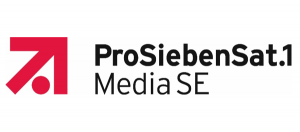Networking & Content Delivery
Ten years of securing, accelerating, and scaling apps around the world – Amazon CloudFront marks its 10th anniversary.
First of all, thank you to each and every one of you who use the Amazon CloudFront service every day. CloudFront’s growth and evolution over the past decade would not have been possible without your feedback—input that has shaped the service since day one. We are excited to have just celebrated our 10-year anniversary of when we first launched Amazon CloudFront, a content delivery network service that has provided AWS customers low latency and high transfer speeds that is integrated with AWS.
On this day, we’re happy to announce six new Edge locations bringing our network total to 150 Points of Presence (139 Edge Locations and 11 Regional Edge Caches) in 65 cities across 29 countries around the world! These new locations come in United States cities Chicago, Newark, and Ashburn and internationally in Munich, Tokyo, and Rio de Janeiro. We are also happy to announce two new features: Origin Failover and support for the WebSocket protocol.
Milestones like this are great times to reflect on the progress made as well as the future ahead. We also take this time to reflect on the many stages of our service’s evolution and the innovative ways in which customers leverage CloudFront to improve their end-user experience.
Stage 1: Taking “AWS100” to market
Fun fact: Amazon CloudFront’s internal code name was AWS100 before going to market.
AWS sets big, hairy, audacious goals (BHAG – pronounced “BEE-hag”) and moves fast to hit those goals. When Amazon S3 launched in 2006, customers asked for a way to further secure and accelerate their static content to users around the world. Responding quickly, Jeff Bezos and Andy Jassy challenged the team to build a global network of servers to fulfill the customer need in just 100 days! The challenge was codenamed “AWS100” as a reminder to the team to delight customers quickly. While we strive to move fast, we never compromise on doing the job right even if it means missing the audacious goals we push ourselves to achieve. The 100-day goal was not met—not even close, by our standards. It wasn’t until around day 200 when we finally had a good beta solution. But the important thing was that the project set in motion the foundational plans for what would become Amazon CloudFront. The team launched CloudFront in November 2008, unveiling 14 Edge locations around the world, including eight in the United States, four in Europe, and two in Asia.
Fun fact: Our founding engineers really wanted to call the service Simple Edge Caching SErvice because they liked the acronym SECSE (pronounced “sexy”). But for some reason, that didn’t fly and instead, we chose Amazon CloudFront.
Stage 2: Growing pains
At AWS, we have a mantra that a product’s launch is always just the starting line and that we should continue to view our service with the Day One mentality immortalized by Jeff Bezos in 1997. CloudFront’s initial offering was a humble content delivery network in which origins had to be S3 buckets, there was no support for the TLS/SSL protocol, and we were still learning how to mitigate DDoS attacks with greater effectiveness and speed.
Fun fact: AWS gives unique awards at its quarterly all-hands meetings. In the early days of CloudFront, Andy Jassy, AWS’s CEO, gave CloudFront engineers a fire extinguisher as an award for their work mitigating a multi-day DDoS attack.
We admittedly make mistakes at times, such as the time during our private beta when a broken YAML parser briefly caused a large number of requests to be misrouted around the world. Any mistake we make is not a trivial event, and we take these events seriously, with full knowledge that they impact our customers and your end users. We drop everything and immediately work to resolve customer-impacting events with intense urgency. Amazon encourages being vocally self-critical during these times, and we write COE (Correction of Errors) reports to document the event, the key learnings that will prevent us from repeating the mistake in the future, and a prioritized list of actions we will take in response with very specific completion dates. These COEs are not just for our own organization to learn from. They are shared across the entire AWS organization to review, learn, and put processes in place to prevent the error from occurring again.
Within the first few years, we moved quickly on feature development to qualify CloudFront as a CDN that not only works for individual developers and small businesses, but is also scalable enough for the large workloads of the world’s biggest enterprises.
Stage 3: Scaling in orders of magnitude
Fun fact: CloudFront’s network has added 50 Edge locations in just the past year, and grown 971% since first launch.

Over the past few years, CloudFront’s growth and momentum has been staggering and we are humbled at the tens of thousands of new customers who adopt the service every year. Each day we continue to scale the network at an increasingly rapid pace, and we’re excited by all of the large events that we now support. Over the past year, we’ve continued to deliver an increasingly large majority of Amazon Prime Video’s video streams, including Thursday Night Football, and also delivered live-streams of both the 2018 Winter Olympics and the 2018 FIFA World Cup. With 150 locations around the world, we not only keep expanding our global network into new countries, but we also continue to increase capacity in existing locations, for added redundancy, reliability, and scale to support your critical, customer-facing workloads.
 Channel 4, a public service broadcaster in the United Kingdom, has used CloudFront for several years to deliver its award-winning on-demand service, All 4. Declan Toman, Online Operations Manager at Channel 4, said, “Channel 4 is an industry leader when it comes to delivering cross-platform programs to millions of viewers across the United Kingdom. We chose CloudFront as a natural extension to our use of Amazon Web Services because of their great support and because of the ability to make configuration changes that fit within our existing workflows. CloudFront provides the scale we need to help us reach our audiences and the quality of service we expect for delivering key programs and events.”
Channel 4, a public service broadcaster in the United Kingdom, has used CloudFront for several years to deliver its award-winning on-demand service, All 4. Declan Toman, Online Operations Manager at Channel 4, said, “Channel 4 is an industry leader when it comes to delivering cross-platform programs to millions of viewers across the United Kingdom. We chose CloudFront as a natural extension to our use of Amazon Web Services because of their great support and because of the ability to make configuration changes that fit within our existing workflows. CloudFront provides the scale we need to help us reach our audiences and the quality of service we expect for delivering key programs and events.”
Amazon CloudFront’s recent network expansions into new countries like the United Arab Emirates and South Africa have both improved average latency reductions by 75% or more.
 Anghami is a top music platform in the Middle East and North Africa, with over 50 million users and 26 million songs. They are one of a number of customers who are benefiting from our recent expansion into the United Arab Emirates. Elie Habib, co-founder and CTO at Anghami, said, “We are very excited by the opportunities that the new AWS Edge locations bring to our service, particularly being able to cope with dramatic peaks in traffic. For example, we see peaks of usage at night, in the morning, and especially when new music is released, which can mean a 300% increase in traffic. Having a local Edge location allows us to more easily cope with these fluctuations. Not having to worry about latency issues or data transfer speeds because Amazon CloudFront is delivering our performance needs frees us up to innovate new ways for users to interact with the app, from anywhere in the world.”
Anghami is a top music platform in the Middle East and North Africa, with over 50 million users and 26 million songs. They are one of a number of customers who are benefiting from our recent expansion into the United Arab Emirates. Elie Habib, co-founder and CTO at Anghami, said, “We are very excited by the opportunities that the new AWS Edge locations bring to our service, particularly being able to cope with dramatic peaks in traffic. For example, we see peaks of usage at night, in the morning, and especially when new music is released, which can mean a 300% increase in traffic. Having a local Edge location allows us to more easily cope with these fluctuations. Not having to worry about latency issues or data transfer speeds because Amazon CloudFront is delivering our performance needs frees us up to innovate new ways for users to interact with the app, from anywhere in the world.”
Stage 4: Day One for 10 years running
Fun fact: Did you know that the first-ever 4K live stream from space was delivered from NASA via the CloudFront network?
AWS100 was a challenge that was simple in its initial concept, but has grown into a sophisticated CDN capable of supporting a wide range of use cases. While we’re known to the world as Amazon CloudFront, we’re still AWS100 at heart and we are still setting big, hairy, audacious goals to make this service even more aligned with your needs. Your feedback has enabled us to use CloudFront as an incubator for a number of new AWS products, including Amazon Route 53, AWS Shield, AWS WAF, and S3 Transfer Acceleration. Your input has also directly shaped the evolution of CloudFront’s roadmap.
For example, working with customers like Amazon.com, which handles customers’ sensitive information, has led us to release features like field-level encryption (FLE). FLE gives you even more granular control on the encryption of specific form field data so that it can only be accessed by the subsystems that require that access. We did this because customers who process payment information wanted to specifically encrypt information like credit card numbers from all of their backend services except their payment processing system. Encrypting key fields helps you mitigate exposure of any sensitive user data, even from accidental logging or core dumps.
A couple of years ago, we saw the opportunity to evolve CloudFront beyond a traditional CDN into a programmable extension of your serverless applications. With the arrival of AWS Lambda, AWS’s highly customizable serverless compute service, we knew that moving Lambda closer to the edge would provide you with a great platform for creating customized solutions that were just as unique as each of your applications. We took on another AWS100-like challenge in 2016 to combine CloudFront and Lambda capabilities and release the feature at re:Invent later that year. We succeeded in launching a Lambda@Edge public beta at re:Invent 2016, and since then, we’ve been continually impressed with the wide variety of custom solutions we’ve seen customers create and document. With Lambda@Edge, you can run your code closer to your users and program how CloudFront handles incoming requests and outgoing responses.
 One customer who leveraged Lambda@Edge to enhance the availability of their application during a critical migration is TrueCar, a digital automotive marketplace for a better car buying experience. “A few years ago, we decided to move our datacenters into the AWS Cloud, but we needed to ensure that the migration happened seamlessly without customer interruption,” said Regis Wilson, Senior Site Reliability Engineer at TrueCar. “As part of that migration, we used CloudFront and Lambda@Edge to dynamically route traffic between our old and new origins as needed. Lambda@Edge was a scalable, flexible, and fast method for setting up routing rules and modifying traffic flows in near real-time. CloudFront gave us the peace of mind that our application was always available during this large migration.”
One customer who leveraged Lambda@Edge to enhance the availability of their application during a critical migration is TrueCar, a digital automotive marketplace for a better car buying experience. “A few years ago, we decided to move our datacenters into the AWS Cloud, but we needed to ensure that the migration happened seamlessly without customer interruption,” said Regis Wilson, Senior Site Reliability Engineer at TrueCar. “As part of that migration, we used CloudFront and Lambda@Edge to dynamically route traffic between our old and new origins as needed. Lambda@Edge was a scalable, flexible, and fast method for setting up routing rules and modifying traffic flows in near real-time. CloudFront gave us the peace of mind that our application was always available during this large migration.”
As part of the continuing evolution of CloudFront, we’re excited to announce two new features as part of our 10th anniversary. First, we’re launching Origin Failover which allows you to associate a primary and backup origin within a CloudFront cache behavior. Now, you can configure CloudFront to respond to events where your primary origin might fail and have CloudFront automatically work with your backup origin before responding to the user request. The second announcement is CloudFront’s support for the WebSocket protocol. WebSocket is a real-time communication protocol that provides bidirectional communication between a client (such as a browser) and a server over a long-held TCP connection. WebSocket is often used in real-time applications such as chat rooms, collaboration platforms, multiplayer games, and financial trading platforms.
 Evolution Gaming, a leading B2B provider of live casino systems, is a customer who previewed our WebSocket support before launch. Viesturs Proškins, head of Video R&D at Evolution Gaming, said, “Evolution Gaming has been looking for a strong CDN partner to match our requirements for a while. With CloudFront now supporting WebSockets, we can consolidate our dynamic and static content delivery under a single distribution, which enhances our app security, improves our global reach, and simplifies our delivery architecture all at the same time.”
Evolution Gaming, a leading B2B provider of live casino systems, is a customer who previewed our WebSocket support before launch. Viesturs Proškins, head of Video R&D at Evolution Gaming, said, “Evolution Gaming has been looking for a strong CDN partner to match our requirements for a while. With CloudFront now supporting WebSockets, we can consolidate our dynamic and static content delivery under a single distribution, which enhances our app security, improves our global reach, and simplifies our delivery architecture all at the same time.”
Security, availability, and performance (in that order) are all essential for your applications, but it’s even better when you can get all three and also reduce your costs. It’s like the embodiment of the expression “you can have your cake and eat it too.” We are always happy when everything comes together for a customer so you can move on to more important things, like innovating your next big idea to grow your business.
 Based in Santa Monica, California, Beachbody provides fitness and nutrition programs to more than 23 million customers. Beachbody OnDemand (BOD), the company’s digital streaming platform, recently migrated all of its web content delivery workloads to Amazon CloudFront. Bryan Muehlberger, CIO, said, “By moving our content delivery workloads to CloudFront, Beachbody was able to significantly reduce its data transfer costs, allowing us to reallocate the money towards the development of applications and other higher-priority efforts. With CloudFront, we also saw huge improvements in performance, with the load time of our applications reduced by more than 30 percent. We are very excited to continue working with CloudFront on additional cost and performance optimizations.” Paul Sutter, SVP of Digital for Beachbody, said “Amazon CloudFront was a strong strategic fit for where I’m driving the future of our BOD platform, and Amazon continues to be my partner of choice.”
Based in Santa Monica, California, Beachbody provides fitness and nutrition programs to more than 23 million customers. Beachbody OnDemand (BOD), the company’s digital streaming platform, recently migrated all of its web content delivery workloads to Amazon CloudFront. Bryan Muehlberger, CIO, said, “By moving our content delivery workloads to CloudFront, Beachbody was able to significantly reduce its data transfer costs, allowing us to reallocate the money towards the development of applications and other higher-priority efforts. With CloudFront, we also saw huge improvements in performance, with the load time of our applications reduced by more than 30 percent. We are very excited to continue working with CloudFront on additional cost and performance optimizations.” Paul Sutter, SVP of Digital for Beachbody, said “Amazon CloudFront was a strong strategic fit for where I’m driving the future of our BOD platform, and Amazon continues to be my partner of choice.”
Here’s to the next decade!
AWS re:Invent is fast approaching and we hope that you’ll join us at some of the many Content Delivery sessions that dive deeper into the capabilities CloudFront offers. We thank you for joining us in this evolutionary journey, and we are excited for what’s to come in the years ahead. We appreciate the kind words of so many of our customers on this milestone anniversary. Ten years later, and it’s still Day One for Amazon CloudFront.
Thank you,
Amazon CloudFront

“We have been using Amazon CloudFront since the beginning. We love how CloudFront has helped us grow and scale our websites securely over all these years. Congratulations on Amazon CloudFront’s 10-year anniversary!” Marco Viganò, Digital CTO, Condé Nast.

“As the distributor of a wide selection of entertainment formats, we have been using CloudFront for the past two years for both live streaming and video on demand. We have been very happy with CloudFront’s performance, availability, and reliability. Happy 10th year!” Christian Meyer, Senior Cloud Architect, ProSiebenSat.1 Digital GmbH.

“We chose CloudFront for its superior performance on both static and dynamic content delivery, and for built-in security features like AWS Shield for DDoS protection. We love the customer obsession of the AWS team. Congratulations to CloudFront on its tenth anniversary.” Jean Dominguez, Director of Cloud Services, Realtor.com.
“For several years, we have been very happy with Amazon CloudFront’s performance, unique features, and the AWS integration of security features such AWS Shield. Congratulations on Amazon CloudFront’s 10-year anniversary!” Hiroki Tanaka, Vice President, Sony Interactive Entertainment.